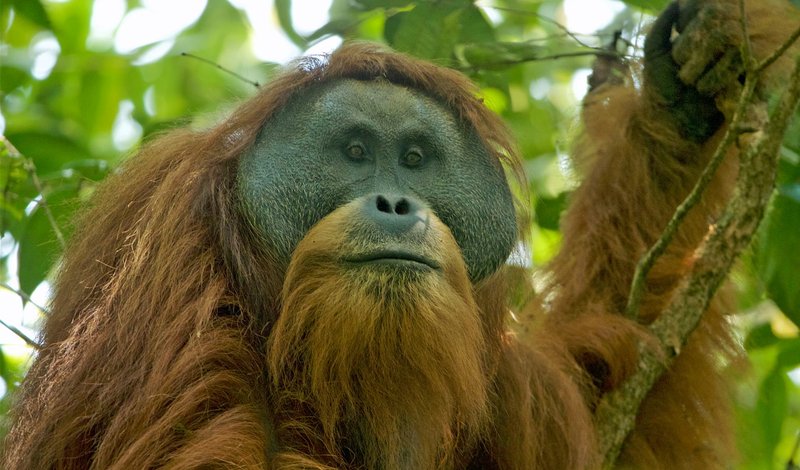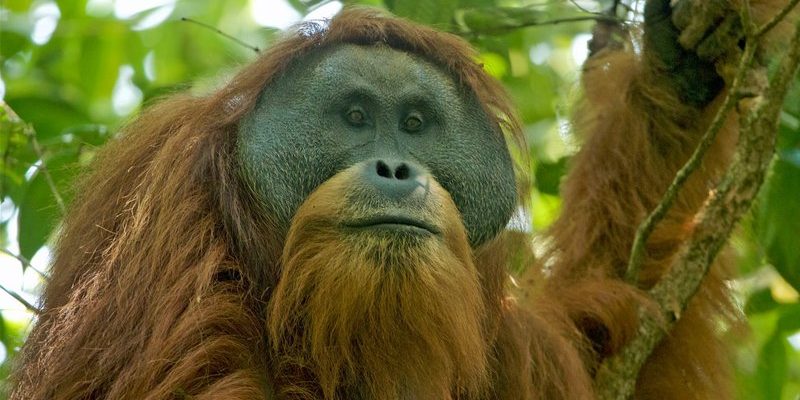
The Tapanuli orangutan has recently caught the world’s attention, not only because it’s one of the most endangered great apes but also due to its cultural significance. Just like how the mythical phoenix symbolizes rebirth, the Tapanuli orangutan represents a connection to the land and the rich heritage of the people in this region. You might wonder, how exactly does this adorable primate weave into the fabric of local stories and beliefs? Let’s dive in and explore!
The Tapanuli Orangutan: A Brief Overview
The Tapanuli orangutan, scientifically known as *Pongo tapanuliensis*, was identified as a distinct species in 2017. Found only in the Batang Toru Ecosystem, this orangutan species is incredibly unique due to its genetic differences and habitat preferences. Imagine a tree that only grows in one tiny corner of the world; that’s what the Tapanuli orangutan represents.
These orangutans are known for their striking reddish-brown fur and gentle demeanor. They primarily live in tree canopies, feeding on fruits, leaves, and even honey. Sadly, the population of Tapanuli orangutans is dwindling, with estimates suggesting there are only about 800 individuals left. This fact heightens their importance not only in biology but in cultural storytelling as well.
Cultural Significance in Local Communities
For many local communities, the Tapanuli orangutan is more than just an animal; it’s a symbol of their identity and history. In various villages around the Batang Toru region, the orangutan is revered, often appearing in traditional dances and art. These expressions help to keep the species alive in people’s hearts and minds—much like a storyteller passing down tales by the fire.
The orangutan is also an important figure in local myths. Some folklore suggests that these creatures are guardians of the forest, protecting trees and plants from harm. This belief fosters a deep respect for the environment, encouraging conservation efforts at a community level. Essentially, the Tapanuli orangutan becomes a bridge between the people and their natural surroundings, reminding them of their roots.
Folklore and Legends Surrounding the Tapanuli Orangutan
Local legends often depict the Tapanuli orangutan as a wise, old figure. For example, there’s a tale of a human child who befriended a Tapanuli orangutan. Over time, the orangutan taught the child about the secrets of the forest, including which fruits are safe to eat and how to understand animal behaviors. In this story, the orangutan symbolizes knowledge and connection to nature, showcasing the ideal harmony between humans and wildlife.
These tales not only provide entertainment but also serve an educational purpose. They highlight the importance of respecting and understanding wildlife. So, when local people gather to share these stories, they’re not just passing time—they’re ensuring that the wisdom of coexistence is not lost.
Modern Representations in Art and Media
In recent years, the Tapanuli orangutan has found its way into modern art and media. Local artists often depict the orangutan in paintings, sculptures, and crafts, emphasizing its beauty and significance. This contemporary portrayal helps spread awareness about the species and the threats it faces.
Documentaries and films focusing on endangered species also feature the Tapanuli orangutan. By sharing these stories on a global scale, filmmakers aim to engage viewers in conservation efforts. This visibility can be crucial in rallying support for such a vulnerable species, making it a part of the international narrative on wildlife protection.
The Role of Education in Conservation
Education plays a vital role in preserving not just the Tapanuli orangutan but also the ecosystem it inhabits. Local schools often include lessons about the importance of biodiversity and the unique features of the Tapanuli orangutan. Young children learn about their responsibilities toward the environment, fostering a sense of stewardship.
By making the orangutan a central figure in education, communities aim to inspire the next generation. Imagine a classroom buzzing with excitement as children learn that they are the caretakers of their forests and wildlife. This shift is essential for future conservation efforts, as it helps build a sustainable relationship with nature.
Threats to the Tapanuli Orangutan and Cultural Heroes
The Tapanuli orangutan faces numerous threats, including habitat loss due to logging and palm oil plantations. As these majestic creatures navigate their increasingly fragmented habitat, local stories often feature heroes who fight for their survival. These heroes could be environmental activists or even mythological figures who protect the land.
In these tales, characters who champion the orangutan’s cause inspire communities to take action. They urge residents to preserve their forests and support sustainable practices. By making these individuals central to folklore, communities can galvanize collective action toward protecting the Tapanuli orangutan.
In a world where species like the Tapanuli orangutan are teetering on the brink of extinction, their representation in culture and folklore is crucial. They symbolize a connection to the land, knowledge, and the shared responsibility of humans to protect their environment. By weaving these themes into stories and local traditions, communities create a rich tapestry that emphasizes conservation and respect for nature.
Ultimately, the Tapanuli orangutan isn’t just a species at risk; it’s a beacon of hope for cultural heritage and environmental stewardship. By keeping the stories alive, local communities continue to inspire not only themselves but also the world to value and protect this remarkable creature and its habitat.

